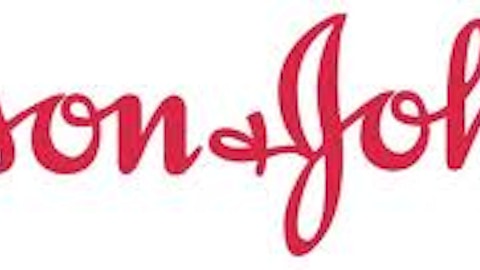Kimberly-Clark’s Competitive Advantage
Kimberly-Clark’s competitive advantage comes primarily from its well-known brand names which it uses to charge premium prices for its products.
The company supports its well-known brands with large advertising expenditures. In fiscal 2014, Kimberly-Clark spent $767 million on advertising.
Kimberly-Clark sells products in slow changing industries. How much has Kleenex changed over the last few decades? There is not much you can do to improve upon tissues, paper towels, or toilet paper. I find it very difficult to imagine a ‘disruptive technology’ in the tissue business.
The glacially slow rate of change in Kimberly-Clark’s market segments give it staying power. Money spent on advertising has a longer ‘shelf life’ than companies in fast changing industries.
Kimberly-Clark’s competitive advantage comes from the brand equity built up in its premium-priced products that exist in slow changing industries.
Growth Prospects
Kimberly-Clark’s earnings-per-share growth has been anemic over the last 20 years.
The company exists in a slow changing industry, but its brands have slowly been losing ground to generic products and competitors.
The image below shows Kimberly-Clark’s earnings-per-share each year since 1999 (including expected full year 2015and expected 2016 numbers):

Kimberly-Clark’s depressing expected 2015 numbers are a result of negative currency effects, and restructuring from the company’s spin-off its health care products segment. The company is expected to return to strong growth in 2016.
Still, Kimberly-Clark has not exhibited acceptable earnings-per-share growth over a very long period of time.
The company’s management expects ‘mid to high single digit earnings-per-share’ growth going forward – this gives a range of 4% to 9% earnings-per-share growth a year. The company’s management is (optimistically) expecting revenue to grow at 3% to 5% a year.
I believe Kimberly-Clark will see somewhat better results over the next 10 years than the previous 10 years. The company is focusing on efficiency and its core brands.
I expect earnings-per-share growth to be in the 4% to 7% range over the next several years; management’s top-end growth numbers seem too optimistic.
This growth combined with the company’s current 2.8% dividend yield gives investors expected returns of ~7% to 9% a year from Kimberly-Clark.
Kimberly-Clark’s Puzzling Valuation
As discussed above, Kimberly-Clark’s growth prospects are not great. Despite this, the company trades at a forward price-to-earnings ratio of 25.6. For comparison, the S&P 500 is trading for a forward price-to-earnings ratio of 17.5.
There’s no doubt that Kimberly-Clark stock scores high marks for safety with investors. At the same time, the company’s recent growth history leaves much to be desired.
As a result, I believe Kimberly-Clark to be overvalued at current prices. Investors should wait until this company’s price-to-earnings ratio falls below 18 before considering adding or initiating a position in the stock.
Recession Performance
Kimberly-Clark performed well through the Great recession of 2007 to 2009. The company’s earnings-per-share through the Great Recession are shown below:
– 2007 earnings-per-share of $4.25
– 2008 earnings-per-share of $4.06
– 2009 earnings-per-share of $4.52
– 2010 earnings-per-share of $4.45
The company’s recession resistance only adds to its appeal as a ‘safety stock’.
Final Thoughts
Kimberly Clark Corp (NYSE:KMB) is a high quality business trading with a strong competitive advantage – that has weakened a bit over the last decade. Despite this, Kimberly-Clark is still the most dominant player in many of the consumer product categories it serves.
The company offers shareholders 7% to 9% total returns per year going forward, with very low volatility. This combination would be appealing if it weren’t for the company’s rich valuation.
The company’s high valuation gives it a below-average rank using The 8 Rules of Dividend Investing. Kimberly-Clark is a hold at current prices, but is not a buy at this time. When the company’s valuation multiples decline it will make a more compelling investment.
Disclosure: None





